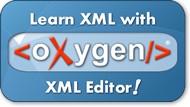PHP Arrays


An array can store one or more values in a single variable name.
What is an array?
When working with PHP, sooner or later, you might want to create many similar
variables.
Instead of having many similar variables, you can store the data as elements
in an array.
Each element in the array has its own ID so that it can be easily accessed.
There are three different kind of arrays:
- Numeric array - An array with a numeric ID key
- Associative array - An array where each ID key is associated
with a value
- Multidimensional array - An array containing one or more arrays
Numeric Arrays
A numeric array stores each element with a numeric ID key.
There are different ways to create a numeric array.
Example 1
In this example the ID key is automatically assigned:
$names = array("Peter","Quagmire","Joe");
|
Example 2
In this example we assign the ID key manually:
$names[0] = "Peter";
$names[1] = "Quagmire";
$names[2] = "Joe";
|
The ID keys can be used in a script:
<?php
$names[0] = "Peter";
$names[1] = "Quagmire";
$names[2] = "Joe";
echo $names[1] . " and " . $names[2] .
" are ". $names[0] . "'s neighbors";
?>
|
The code above will output:
Quagmire and Joe are Peter's neighbors
|
Associative Arrays
An associative array, each ID key is associated with a value.
When storing data about specific named values, a numerical array is not
always the best way to do it.
With associative arrays we can use the values as keys and assign values
to them.
Example 1
In this example we use an array to assign ages to the different persons:
$ages = array("Peter"=>32, "Quagmire"=>30, "Joe"=>34);
|
Example 2
This example is the same as example 1, but shows a different way of
creating the array:
$ages['Peter'] = "32";
$ages['Quagmire'] = "30";
$ages['Joe'] = "34";
|
The ID keys can be used in a script:
<?php
$ages['Peter'] = "32";
$ages['Quagmire'] = "30";
$ages['Joe'] = "34";
echo "Peter is " . $ages['Peter'] . " years old.";
?>
|
The code above will output:
Multidimensional Arrays
In a multidimensional array, each element in the main array can also be an array.
And each element in the sub-array can be an array, and so on.
Example
In this example we create a multidimensional array, with automatically
assigned ID keys:
$families = array
(
"Griffin"=>array
(
"Peter",
"Lois",
"Megan"
),
"Quagmire"=>array
(
"Glenn"
),
"Brown"=>array
(
"Cleveland",
"Loretta",
"Junior"
)
);
|
The array above would look like this if written to the output:
Array
(
[Griffin] => Array
(
[0] => Peter
[1] => Lois
[2] => Megan
)
[Quagmire] => Array
(
[0] => Glenn
)
[Brown] => Array
(
[0] => Cleveland
[1] => Loretta
[2] => Junior
)
)
|
Example 2
Lets try displaying a single value from the array above:
echo "Is " . $families['Griffin'][2] .
" a part of the Griffin family?";
|
The code above will output:
Is Megan a part of the Griffin family?
|


Learn XML with <oXygen/> XML Editor - Free Trial!
 |
|
oXygen helps you learn to define,
edit, validate and transform XML documents. Supported technologies include XML Schema,
DTD, Relax NG, XSLT, XPath, XQuery, CSS.
Understand in no time how XSLT and XQuery work by using the intuitive oXygen debugger!
Do you have any XML related questions? Get free answers from the oXygen
XML forum
and from the video
demonstrations.
Download a FREE 30-day trial today!
|
|